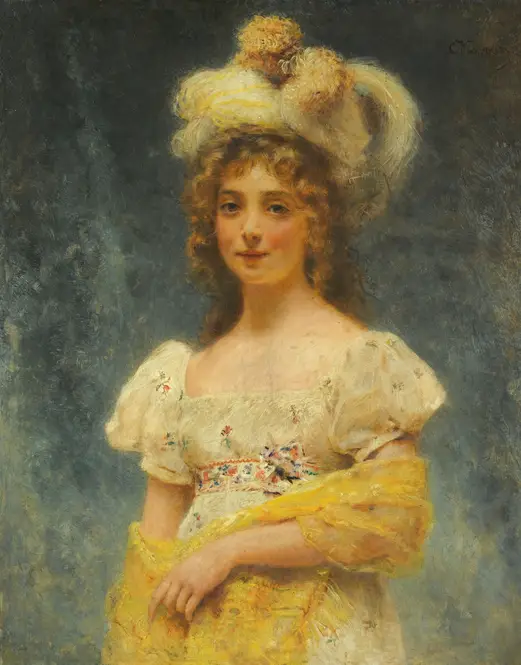Konstantin Egorovich Makovsky
Konstantin Egorovich Makovsky (1839–1915), Russian, A master of opulent historical scenes and portraiture, his work captured the grandeur of Russia’s past with a theatrical flair. Born into a family of artists, he trained at the prestigious Imperial Academy of Arts but later broke away with the rebellious *Peredvizhniki* (Wanderers), rejecting academic rigidity for emotional depth and social commentary. Yet, unlike his peers, he never fully abandoned spectacle—his canvases dripped with jewel-toned fabrics, intricate armor, and luminous skin, earning him comparisons to the French Romantics.
Makovsky’s genius lay in balancing accessibility with technical brilliance. *The Boyar Wedding Feast* (1883) immerses viewers in 17th-century Muscovy, every embroidered sleeve and gilded goblet painstakingly rendered, while *Children Fleeing the Storm* (1872) reveals a softer touch, its peasant subjects bathed in tender light. Critics accused him of prioritizing beauty over substance, but his popularity with aristocrats and tsars (Alexander II commissioned multiple portraits) funded daring experiments—like his shadowy, psychologically charged *The Murder of False Dmitry* (1897).
Though eclipsed by avant-garde movements after his death, his legacy endures in Russia’s collective imagination. Few artists could make history feel so alive, or so irresistibly glamorous.
Makovsky’s genius lay in balancing accessibility with technical brilliance. *The Boyar Wedding Feast* (1883) immerses viewers in 17th-century Muscovy, every embroidered sleeve and gilded goblet painstakingly rendered, while *Children Fleeing the Storm* (1872) reveals a softer touch, its peasant subjects bathed in tender light. Critics accused him of prioritizing beauty over substance, but his popularity with aristocrats and tsars (Alexander II commissioned multiple portraits) funded daring experiments—like his shadowy, psychologically charged *The Murder of False Dmitry* (1897).
Though eclipsed by avant-garde movements after his death, his legacy endures in Russia’s collective imagination. Few artists could make history feel so alive, or so irresistibly glamorous.
-

Yellow shawl
Konstantin Egorovich Makovsky (Russian, 1839–1915)A luminous yellow shawl envelops the subject in warmth, its intricate folds and soft shadows hinting at untold stories beneath the quiet surface.
